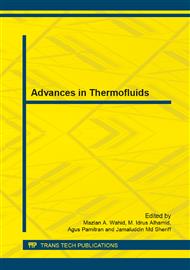p.257
p.262
p.268
p.273
p.280
p.285
p.292
p.301
p.307
Main Steam Temperature Modeling Based on Levenberg-Marquardt Learning Algorithm
Abstract:
Main steam temperature is one of the most important parameters in coal fired power plant. Main steam temperature is often describe as non-linear and large inertia with long dead time parameters. This paper present main steam temperature modeling method using neural network with Levenberg-Marquardt learning algorithm. The result of the simulation showed that the main steam temperature modeling based on neural network with Levenberg-Marqurdt learning algorithm is able to replicate closely the actual plant behavior. Generator output, main steam flow, main steam pressure and total spraywater flow are proven to be the main parameters affected the behavior of main steam temperature in coal fired power plant.
Info:
Periodical:
Pages:
307-311
Citation:
Online since:
August 2013
Price:
Сopyright:
© 2013 Trans Tech Publications Ltd. All Rights Reserved
Share:
Citation:


